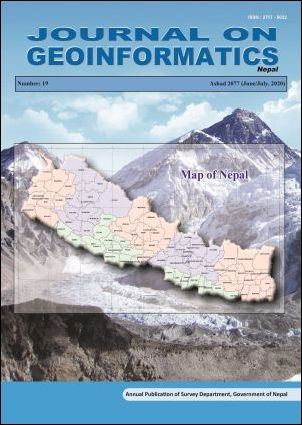Evolution of Unmanned Aerial Vehicles in Nepal
DOI:
https://doi.org/10.3126/njg.v19i1.50963Keywords:
UAV Surveying, Drone Mapping, Flying Labs, Disaster MappingAbstract
Nepal has tremendous geographic diversity rising from as low as 59 metres elevation in the tropical Terai to the highest peak in the world, Mt. Everest, at 8,848 ft. The countryranks 4th, 11th and 30th as the most vulnerable country in terms of risk from climate change, earthquake and flood respectively.[1] As a part of response to any disaster, geographical knowledge of the vulnerable area is the foundation to effectively plan and implement the response. There exist various ways of topographical surveying and mapping which are being used to acquire such geoinformation. The undulating geography of Nepal makes topographical surveying and mapping time consuming and arduous through the traditional ground-based methodologies. Furthermore, the remote sensing techniques are not much useful for a country like Nepal that doesn’t have its dedicated satellites and hence lacking ways to obtain timely updated information. The recent few years have seen escalation of some of the frontier technologies including Unmanned Aerial Vehicles (UAVs) in surveying and mapping, aerial photo/videography, surveillance and a number of other applications. UAVs were widely introduced in Nepal in the aftermath of the April 2015 earthquake. An unprecedented number of small and lightweight UAVs were flown over highly damaged areas and heritage sites by journalists and humanitarian responders to assist in immediate rescue, relief, and reconstruction efforts. However, risks to national security by the unregulated use of UAVs was realized by the Government of Nepal, and the Ministry of Home Affairs released a set of strict guidelines that controlled the use of UAVs in a stringent way. This limited use of UAVs in Nepal bottlenecked the increasing adoption of this technology, both for humanitarian responses and private sectors. However, increasing demand has recently led to the release of a comparatively flexible “UAV Flight Guidelines 2075” that provides the authority to grant UAV flight permissions for lightweight UAVs to the local governments, thus simplifying the procedure for most UAV users. It also reflects the positive change in perception of the government towards UAV technology. This study seeks to identify, analyze and document the evolution in application of UAV technology in Nepal across several application areas.




